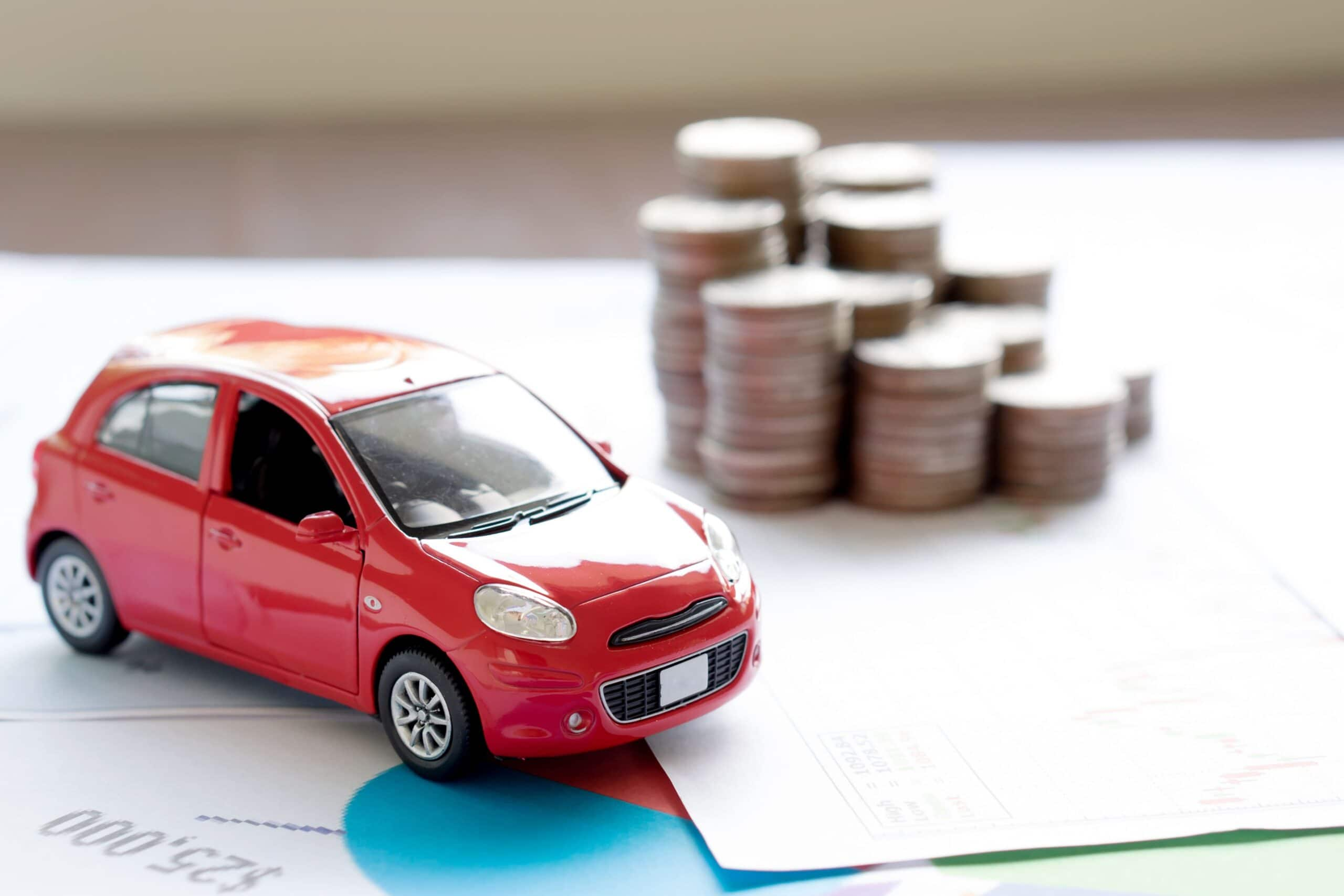- What is considered a high-risk driver and who needs a high-risk insurance policy?
- Best insurance companies for high-risk drivers
- Cheapest car insurance for high-risk drivers
- Car insurance for high-risk drivers by state
- How to save money on high-risk auto insurance
- How long are you considered a high-risk driver?
- How to get cheap car insurance with a bad driving record
- Frequently asked questions: High-risk car insurance
What is considered a high-risk driver and who needs a high-risk insurance policy?
High-risk car insurance is for drivers who are considered riskier to an insurer than the average driver.
So what exactly is a high-risk driver? Here are some groups of drivers who are typically deemed as high-risk and may need to apply for a high-risk insurance policy:
Drivers with multiple tickets or accidents on their record: A single ticket or minor fender bender might not make you a high-risk driver, but multiple tickets probably will. You also might be deemed a greater risk if you have a history of multiple at-fault accidents.
Drivers convicted of a serious violation: A DUI, reckless driving or other serious violation can immediately land you in the high-risk category. These could also require you to get an SR-22, a state-mandated certificate indicating you carry a policy that meets the state's minimum insurance coverage requirements.
Drivers who have been caught driving uninsured: If you have been caught driving uninsured, insurance companies will likely see you as riskier to insure in the future.
Drivers with bad credit: Drivers with poor credit-based insurance scores tend to file more frequent claims, which may result in them being categorized as high-risk. A handful of states have outlawed using credit in car insurance pricing.
Is a teenager a high-risk driver? Because teens lack driving experience and are sometimes less cautious than older drivers, they pose a higher risk to insurers.
However, they aren't required to apply for a high-risk policy unless something unusual about their driving history – such as racking up multiple tickets or accidents – makes them a major red flag to insurers.
Although most teen drivers qualify for coverage through a standard insurance policy, they often pay higher rates than drivers of other ages.
Best insurance companies for high-risk drivers
As a high-risk driver, you may be able to buy a standard policy at a higher rate from a traditional private insurance company. In other cases, you might have to buy a non-standard policy specifically from insurance companies for high-risk drivers.
The good news is that some big companies have divisions that sell nonstandard policies. There are also smaller, reputable companies that sell nonstandard insurance.
Bear in mind that there is a difference between paying more for a policy from a standard insurance company due to your driving record and needing to purchase a high-risk insurance policy.
State Farm offers the best high-risk auto insurance policy, though the best company could be different based on your unique needs.
Below is a list of the best high-risk auto insurance companies:
| Company | NAIC complaint Ratio | AM Best | Survey score* | Annual premium for high-risk drivers | Insurance.com score |
|---|---|---|---|---|---|
| State Farm | 0.52 | A++ | 4.44 | $2,614 | 4.6 |
| Geico | 0.77 | A++ | 4.27 | $2,645 | 4.33 |
| Travelers | 1.03 | A++ | 4.25 | $2,949 | 3.88 |
| Nationwide | 0.66 | A+ | 4.12 | $2,506 | 4.35 |
| Progressive | 0.73 | A+ | 4.26 | $3,189 | 4.13 |
| Allstate | 0.95 | A+ | 4.28 | $4,115 | 3.59 |
| Farmers | 0.77 | A | 4.32 | $4,303 | 3.7 |
| USAA | 0.99 | A++ | 4.48 | $2,062 | 4.31 |
*Score based on the Insurance.com Best Car Insurance Companies survey of insurance customers
Cheapest car insurance for high-risk drivers
The cheapest car insurance company for high-risk drivers is Nationwide, though USAA offers cheaper rates to those who are eligible.
Here are the average annual premiums for the top four car insurance companies that offer cheap car insurance for high-risk drivers:
- Nationwide: $2,506
- State Farm: $2,614
- Geico: $2,645
- Travelers: $2,949
Keep in mind that these are average rates. If you have multiple tickets or accidents, a combination of both, or are high-risk for another reason, the cheapest company for you might vary.
The best thing to do is to shop around and compare car insurance rates from as many companies as possible to find the best deal.
Car insurance for high-risk drivers by state
The amount of money a high-risk driver will pay for car insurance depends on many factors, including where the individual lives and their driving profile. For example, a high-risk driver in Florida who has a DUI will pay $4,073, while a driver with the same profile in Maine will pay $1,555. But if the driver is considered high-risk because they have poor credit, they’ll pay $4,862 in Florida and $1,759 in Maine.
Below are the average annual premiums for high-risk drivers by state and driving profile.
| State | Avg rate | DUI rate | 2 speeding tickets | 1 accident with injuries | Poor credit |
|---|---|---|---|---|---|
| Alaska | $1,288 | $1,853 | $1,765 | $1,880 | $2,119 |
| Alabama | $1,517 | $2,369 | $2,249 | $2,245 | $3,015 |
| Arkansas | $1,483 | $2,449 | $2,266 | $2,313 | $3,167 |
| Arizona | $1,661 | $2,719 | $2,557 | $2,536 | $3,926 |
| California | $2,206 | $6,111 | $4,609 | $3,934 | - |
| Colorado | $1,977 | $3,009 | $2,730 | $2,757 | $3,295 |
| Connecticut | $1,455 | $2,588 | $1,865 | $2,197 | $2,315 |
| Washington, D.C. | $1,904 | $3,058 | $2,490 | $2,793 | $3,355 |
| Delaware | $1,751 | $2,728 | $2,274 | $2,413 | $3,156 |
| Florida | $3,008 | $4,073 | $4,289 | $4,390 | $4,862 |
| Georgia | $1,618 | $2,863 | $2,333 | $2,576 | $2,701 |
| Hawaii | $1,309 | $4,150 | $1,793 | $1,841 | - |
| Iowa | $1,241 | $1,792 | $1,809 | $1,734 | $2,156 |
| Idaho | $1,011 | $1,664 | $1,363 | $1,390 | $2,049 |
| Illinois | $1,364 | $2,375 | $2,132 | $2,082 | $2,426 |
| Indiana | $1,282 | $2,064 | $2,096 | $2,002 | $2,129 |
| Kansas | $1,493 | $2,500 | $2,258 | $2,025 | $2,549 |
| Kentucky | $1,865 | $3,209 | $2,734 | $2,805 | $3,814 |
| Louisiana | $3,197 | $5,015 | $5,181 | $5,164 | $7,448 |
| Massachusetts | $1,760 | $3,137 | $2,588 | $2,698 | - |
| Maryland | $1,966 | $3,143 | $2,894 | $3,072 | $3,412 |
| Maine | $1,049 | $1,555 | $1,497 | $1,559 | $1,759 |
| Michigan | $4,013 | $10,260 | $6,851 | $5,767 | $8,600 |
| Minnesota | $1,686 | $3,337 | $2,704 | $2,362 | $3,608 |
| Missouri | $2,372 | $3,341 | $3,456 | $3,769 | $4,157 |
| Mississippi | $1,405 | $2,373 | $1,903 | $2,091 | $2,961 |
| Montana | $1,766 | $2,786 | $2,223 | $2,544 | $2,747 |
| North Carolina | $1,396 | $5,726 | $2,597 | $2,361 | $2,069 |
| North Dakota | $1,232 | $2,175 | $1,749 | $1,681 | $2,154 |
| Nebraska | $1,847 | $3,212 | $2,544 | $2,623 | $3,606 |
| New Hampshire | $952 | $1,606 | $1,380 | $1,393 | $1,545 |
| New Jersey | $2,262 | $3,885 | $3,359 | $4,048 | $3,988 |
| New Mexico | $1,695 | $2,451 | $2,215 | $2,328 | $2,516 |
| Nevada | $2,389 | $3,902 | $3,423 | $3,594 | $3,711 |
| New York | $1,867 | $2,784 | $2,498 | $2,386 | $4,753 |
| Ohio | $1,114 | $1,697 | $1,594 | $1,676 | $2,056 |
| Oklahoma | $1,852 | $2,643 | $2,657 | $2,812 | $3,326 |
| Oregon | $1,502 | $2,340 | $2,205 | $2,286 | $2,586 |
| Pennsylvania | $1,297 | $2,072 | $1,872 | $1,698 | $2,373 |
| Rhode Island | $1,792 | $3,061 | $2,755 | $2,044 | $3,225 |
| South Carolina | $1,811 | $2,666 | $2,677 | $2,593 | $3,427 |
| South Dakota | $1,558 | $2,883 | $2,152 | $2,223 | $3,210 |
| Tennessee | $1,311 | $2,126 | $1,974 | $2,036 | $2,612 |
| Texas | $1,981 | $2,963 | $2,795 | $3,254 | $3,329 |
| Utah | $1,601 | $2,402 | $2,350 | $2,373 | $3,024 |
| Virginia | $1,228 | $1,819 | $1,838 | $1,845 | $2,151 |
| Vermont | $1,057 | $1,743 | $1,426 | $1,521 | $1,919 |
| Washington | $1,351 | $2,374 | $1,939 | $1,911 | $1,351 |
| Wisconsin | $1,573 | $2,753 | $2,588 | $2,401 | $3,166 |
| West Virginia | $1,424 | $2,494 | $2,162 | $2,090 | $2,554 |
| Wyoming | $1,763 | $3,087 | $2,413 | $2,318 | $2,870 |
How to save money on high-risk auto insurance
While the cost of car insurance for high-risk drivers can be steep, you can still find ways to save. Here are a few ways anyone, including high-risk drivers, can lower their rates:
- Shop around
- Take a defensive driving course
- Raise your deductible
- Bundle your auto and homeowners insurance
- Improve your credit score
- Ask about low-mileage discounts if you don’t drive much
- Drive cautiously so you build a clean driving record
- Ask the insurance company about all available discounts
How long are you considered a high-risk driver?
While three years is the typical timeframe, it depends on the particular insurance company and the state you live in. Some states and insurers will look back as far as five years.
Many states use a points system. You receive a score based on how severe an incident is. Unlike with video games, accumulating points is negative — the more severe the offense, the greater the number of points you will incur.
That means you are more likely to be considered a high-risk driver if you have accumulated many points.
How to get cheap car insurance with a bad driving record
Comparison shop. Compare quotes from both standard (if you qualify) and nonstandard companies. You can get quotes based on a number of different coverage amounts, but be careful not to choose the cheapest policy if it leaves you underinsured.
Look closely at rates. Ensure the quotes you gather are for the same coverage amounts from each insurer. Otherwise, you'll be comparing apples to oranges. Also, it's important to remember that the rates for high-risk insurance can vary depending on why you are considered high-risk.
Ask about discounts. Discounts are usually available to drivers. Ask about the discounts you qualify for, and remember that discounts vary by company.
Shop frequently. Insurers might change their rates from time to time. It's a good idea to comparison shop for high-risk car insurance every six months or so.
Frequently asked questions: High-risk car insurance
How much does high risk auto insurance cost?
High-risk car insurance can cost significantly more than standard car insurance. While it is more expensive overall, the cost can vary widely and depends on factors such as the insurer, where you live, and why you are deemed a high risk.
How can I lower my car insurance as a high-risk driver?
There are several ways to lower the cost of your car insurance when you are a high-risk driver. For example, your deductibleThe deductible is the amount you pay out of pocket for a covered loss when you file a claim. can impact your premiumThe payment required for an insurance policy to remain in force. Auto insurance premiums are quoted for either 6-month or annual policy periods.. The higher the deductible, the lower your premium.
Also, look for discounts an insurer might offer. Price breaks might be available for being a loyal customer, going claim-free for a period, using your policy to cover more than one vehicle or setting up autopay. Some insurers also offer a discount if you sign up for a defensive driving course or are a good student. When in doubt, do your homework, and don't be afraid to ask to see what discounts are available.
What if I can’t find high-risk insurance?
Finding high-risk insurance can certainly be a tough task. If one insurer declines to cover you for auto insurance, keep shopping with the best auto insurers. Compare quotes. By being informed and knowing what to expect in terms of rates and coverage, you can find a policy that works for you.
If you can't find insurance on the open market, you may have to buy a policy from your state's assigned risk pool. This service is available in all states to ensure everyone can meet basic insurance requirements.
Methodology
Insurance.com fielded rates via Quadrant Data Services for drivers with multiple high-risk statuses, including DUI, multiple tickets, accidents and poor credit. Rates are based on a 40-year-old male driver with full coverage of 100/300/100 and $500 deductibles for comprehensive and collision.
The best companies ranking is based on these rates as well as third-party ratings from AM Best and the National Association of Insurance Commissioners (NAIC) as well as the 2024 Best Car Insurance Companies survey of insurance customers.






